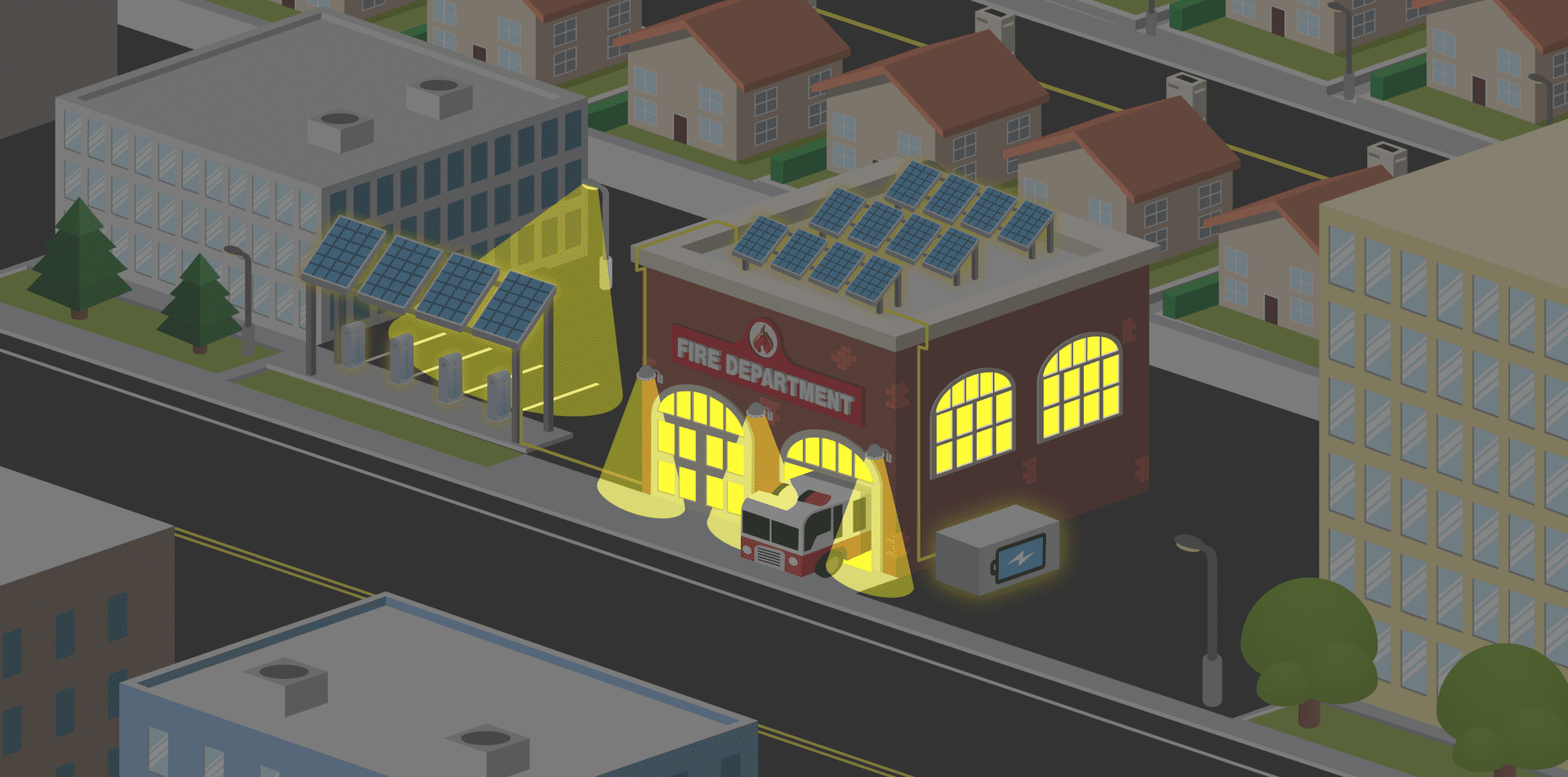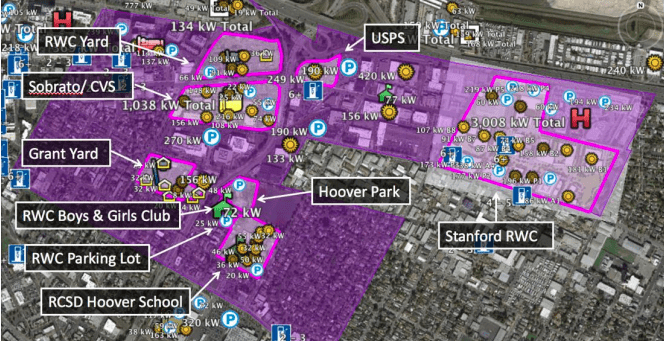Vote No on AB 942: Defend Rooftop Solar Affordability
Redwood Energy reports on Clean Coalition’s expert commentary, warning that AB 942 threatens rooftop solar affordability and undermines the clean‑energy transition
Read article

PAEC will include at least one Solar Emergency Microgrid that the Clean Coalition is designing to provide renewables-driven power backup to critical facilities.
A Solar Emergency Microgrid has three basic components:
Solar Emergency Microgrids are designed to provide indefinite backup power for critical loads, like police and fire stations, emergency operations centers and shelters, and critical communications and water infrastructure.
This design and deployment plan is for a Solar Emergency Microgrid within the core PAEC region. The Solar Emergency Microgrid will provide renewables-driven power backup for critical facilities, such as police and fire stations, emergency operations centers, emergency shelters, and other facilities prioritized by the jurisdiction — providing environmental, economic, and resilience benefits to the area.

The latest in clean local energy
Learn about our innovative projects and initiatives on our blog, and see what others are reporting about our important work.
Redwood Energy reports on Clean Coalition’s expert commentary, warning that AB 942 threatens rooftop solar affordability and undermines the clean‑energy transition
Read articleThis Clean Coalition hosted webinar took place on 27 June 2025 at 10:00 AM PST.
Read MoreThis blog post highlights the RGL Community Microgrid, which will provide clean energy and resilience to a disadvantaged community (DAC), utilize master metering, and serve as a critical model for future multi-unit housing (MUH) projects and master metering policies.
Read More